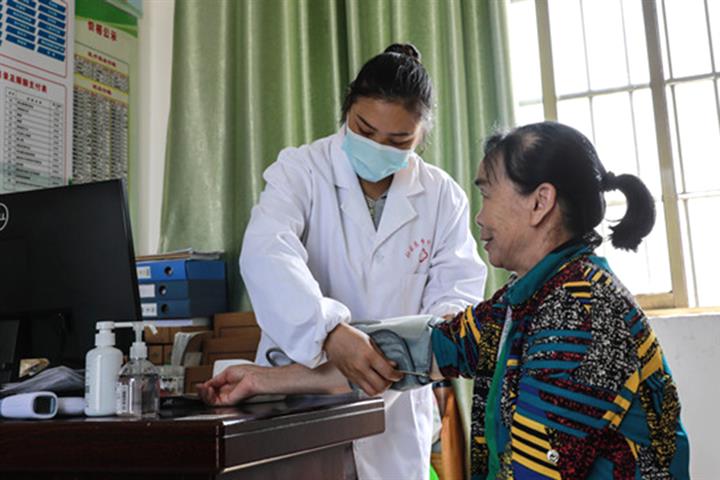 Nearly 300 Million Chinese Have High Blood Pressure
Nearly 300 Million Chinese Have High Blood Pressure(Yicai) Aug. 12 -- China has almost 300 people with hypertension, or high blood pressure, with the condition showing a more pronounced upward trend among young and middle-aged people and in rural areas.
In addition, around 400 million Chinese have dyslipidemia, or abnormal levels of lipids in the bloodstream, according to the latest version of the Chinese Guidelines for Prevention and Treatment of Hypertension, the first update in six years, released by relevant authorities yesterday.
The awareness, treatment, and control rates of hypertension among the young and middle-aged population are all relatively low, the report showed. A high-sodium, low-potassium diet, overweight and obesity, smoking, excessive alcohol consumption, and psychosocial factors are all important risk factors.
"Considering the aging population, the heavy burden of chronic diseases, the wide range of patient groups, the complexity of comorbidities, and the lack of long-term standardized management all pose severe challenges to the prevention and control of chronic diseases," said Wang Zhanshan, a national standing committee member and secretary-general of the Chinese Medical Association's health management branch.
"In response to the enormous social demand for chronic disease management, it is necessary to establish a closely integrated chronic disease health management alliance system," Wang noted.
Hypertension is closely associated with cardiovascular risk, with stroke being the leading complication among Chinese with the condition, while there is also a significant increase in those with coronary heart disease. Other complications caused by hypertension include atrial fibrillation, heart failure, end-stage renal disease, and dementia.
The new guidelines have not changed the diagnostic threshold for hypertension of 140/90 millimeters of mercury without antihypertensive medication but have raised the treatment targets. For people aged 65 to 79, the recommended clinic blood pressure target is < 140/90 mmHg, while for those aged 80 and above is < 150/90 mmHg, a more aggressive recommendation than the last guidelines in 2018.
Editor: Martin Kadiev